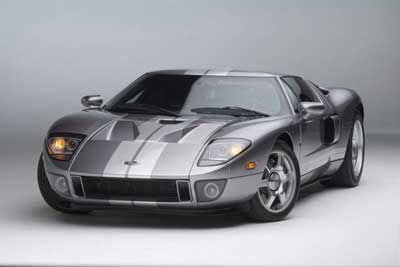Recent Articles
Popular Makes
Body Types
Retro Car Photo Gallery
Old, New and Somewhere in Between
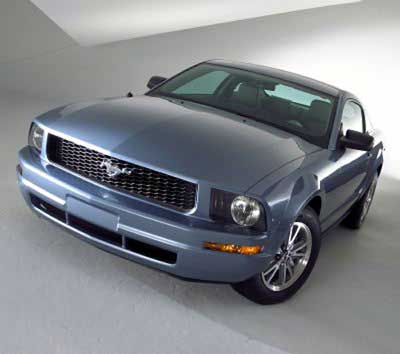
At some point in time, every automotive enthusiast dreams of owning an iconic car from the past whether it’s a VW Bug, a rugged Jeep, or the beloved Ford Mustang. But the fact is, most of us think of these old cars as unreliable and unrefined and don’t want the hassle and upkeep an older car requires to serve as a daily driver. That’s why the current retro-modern styling craze has captured our collective hearts, even if it is nothing more than a smart marketing tool. Give the public a refined and reliable version of their favorite icon from the past, add a warranty to finalize the sale, and -- instant profit center.
America has jumped at several opportunities to own a piece of the past, even though many were loose translations, but has ignored others. Some manufacturers like Mini stay true to the original while others like GM and Nissan interpret retro-modern a different way. What is the recipe for success? Do some designs fail because they’re based on vehicles too old or obscure to appeal to a wide range of consumers, or do customers walk because the design isn’t faithful enough to the original to make the association? For every retro-modern car that collect dust on dealer lots, others become big sellers and with Baby Boomers retiring with more personal wealth than any generation before it looks like the retro theme is here to stay.
Photo 2 -- Camaro
The 1967-69 first-generation Chevrolet Camaro took the country by storm and kicked off a so-called “pony car war” that lasted until the fourth-generation Camaro bit the dust shortly after the turn of the century. Thanks to its triangular rear quarter windows, broad creased shoulders, Coke-bottle waistline, and hooded headlamps, the Chevrolet Camaro Concept is instantly recognizable as a first-generation Camaro. Add to that quad taillights and sexy dual exhaust outlets, and you’ve got the look of the original front to back and side to side. If GM decides to build a new Camaro based on this show car, you can bet the Z28 version will have the same 400-horsepower, Corvette-derived 6.0-liter V8 under the hood, equipped with Active Fuel Management to achieve as much as 30 mpg on the highway, so long as you don’t row all six gears for everything they’re worth. Ditch the double-dubs for smaller wheels, and the Chevrolet Camaro Concept you see in this photograph could easily be produced.
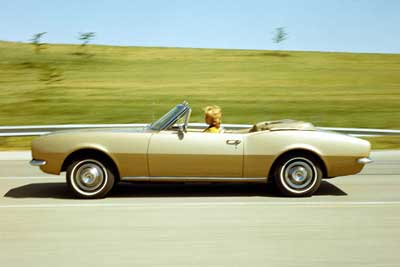
Photo 3 -- Chevy HHR
Typically, retro-modern cars are styled after easily recognizable automotive icons from an era long past. The Chevrolet HHR (Heritage High Roof) adheres to this recipe, but the problem is most people don’t have a clue what inspired its design. All you can figure out is that it must be based on a car made within ten years either side of World War II – or the modern Chrysler PT Cruiser. In fact, the HHR is based on the 1949 Chevrolet Suburban, and thus misses a key hallmark of retro-modern design – update a classic icon from the past, not an obscure relic nobody remembers. Few people have fond memories of the 1949 Suburban, unlike cars such as the Ford Mustang, MINI Cooper or Volkswagen Beetle. Add to that the HHR’s small four-cylinder engine and front-wheel drive layout instead of an all-American V8 engine and rear-wheel drive, and the HHR is unlikely to enjoy staying power in the market – especially since Chrysler has already been plowing this field for five years. Thirty years from now, will someone design a car that looks like the HHR? Probably not, since that would continue the cycle of resurrecting vehicles that possess no enthusiast base.
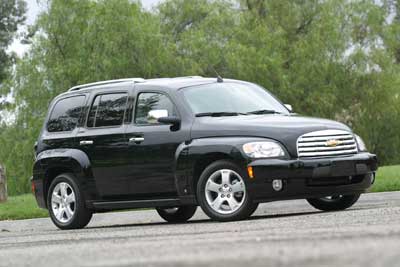
Photo 4 -- Chevy SSR
There is no doubt that the curvaceous pickups from the late 1940s and early 1950s influenced the Chevrolet SSR, a proper mix of old design and new technology. The sweeping, complex-curved fenders of yesteryear are combined with a modern V8 engine and rear wheel drive. Even the interior is nicely done with an old-school dual cowl design and chrome lock buttons with swirl-patterned tops that look just like those from GM products of the 1960s and 70s. But the SSR takes retro-modern one step further with a slick retractable hardtop, making it the only convertible pickup truck on the market and also needlessly complicated. The Chevrolet SSR created quite a stir when first announced but the price tag, which starts are $40,000 and goes up from there, is too much to swallow for many potential buyers. Add the dealer markups when the SSR was released, combined with predicted durability problems with the retractable roof and the vehicle’s utterly impractical cargo bed, and the Chevrolet SSR ultimately never captured the heartbeat of America.
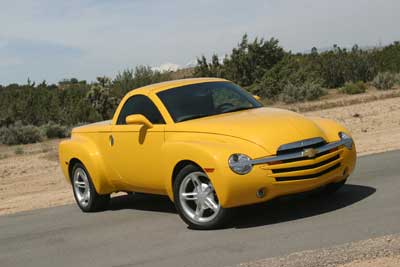
Photo 5 -- Chrysler 300
Chrysler didn’t quite stick to the theme of the original 300 series when designing the 2005 version. The new car is a sedan while the original was a coupe, and the old design was curvaceous whereas the new 300 is sharply edged. Plus, the new Chrysler 300 looks more like a Bentley than anything Chrysler has built before. But they do share one thing – a penchant for horsepower. Touted as the most powerful American car on the road in its day, the 1955 Chrysler 300 earned that title with a V8 that produced 300 horsepower. Today’s Chrysler 300 may not hold the same title as its forebear, but with 425 horses corralled under the hood of the new Chrysler 300 SRT-8, it isn’t far off.
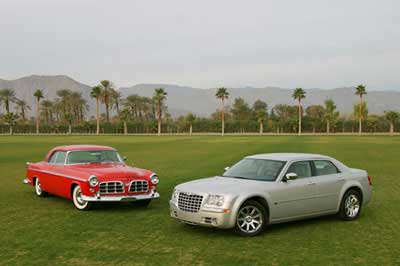
Photo 6 -- PT Cruiser
Few cars have had the impact the Chrysler PT Cruiser did when it first hit the market. The design was a smash hit. Dealers couldn’t get enough stock and Chrysler was not prepared for the onslaught of orders. Those buyers willing to pay the high dealer markup were envied by those that had to wait. Not since the Volkswagen New Beetle had a retro vehicle captured the hearts of the American public the way this new Chrysler did. According to Bryan Nesbitt, the PT Cruiser’s designer (and, incidentally, the stylist behind the Chevrolet HHR), the retro Chrysler’s design was derived from sedan delivery vehicles of the late 30’s and early 40’s. The PT Cruiser’s appeal lay in its unique design combined with modern mechanicals and a truly useful interior. There was nothing else on the road like it. But once the market was saturated with PT Cruisers, its appeal faded despite the addition of a turbocharged GT model and a roomy convertible, and to keep the factories running, Chrysler had to sell them to rental fleets and offer large rebates.
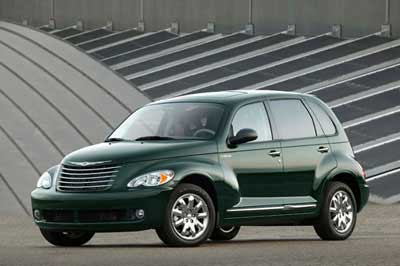
Photo 7 -- Challenger
Looking to cut into the Ford Mustang’s piece of all-American apple pie, Dodge is breathing life back into the Challenger nameplate, hoping to rob the Mustang of its recently restored glory. The Dodge Challenger Concept foreshadows a likely production model, and the styling is based on the 1970 Challenger R/T. The Challenger Concept follows the original design right down to the hood scoops, racing stripes and pistol grip shifter. Not everything is based on the original though. The concept has large diameter six-spoke alloy wheels and a modern Hemi V8 motor that Chrysler uses in everything from the 300 SRT-8 to the Jeep Grand Cherokee SRT-8. With nostalgic styling and a monster motor to back up the performance that is promised by its looks, the new Dodge Challenger will certainly have Mustang owners looking over their shoulders and Ford cooking up something new in the kitchen.
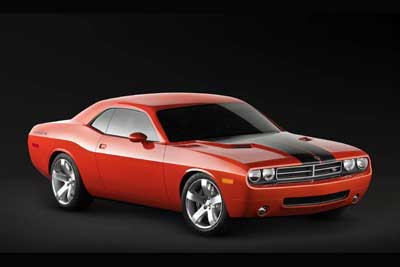
Photo 8 -- Charger
Since the new 2006 Dodge Charger hit the streets it has been tagged as a poser by devotees of the muscle car era because it’s got four doors instead of two. Many people were expecting a high-horsepower coupe that would resemble the original fastback Charger. But now, that job clearly belongs to the Dodge Challenger. While the new Charger might be a family four door, two of its trim levels offer plenty of raw power. If performance is what you want, choose the R/T or the SRT-8 versions. The new Hemi V8 engines found in these models uphold the Charger’s muscle-car image, making its four-door reality a non-issue. Although the Charger’s styling doesn’t hold true to the original – only faint themes in the roofline, rear glass, and fender haunches recall the older models – Dodge did what most American manufacturers have done in creating retro-modern automobiles. It borrowed a piece of the original Charger’s heritage and modernized the rest. The result, in the Charger’s case, is a fine family four-door that can perform and handle as well as competing models that cost twice as much, all while exhibiting a brash, in-your-face design just like the original model. Who says America can’t build cool cars?
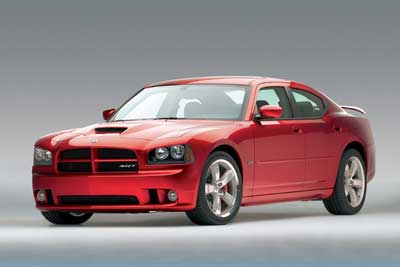
Photo 9 -- Thunderbird
Jim O’Connor – President of Ford Division
It’s interesting to note from the above quote that Ford didn’t consider the most recent Thunderbird to be a retro design. In reality, it is one of the few retro-modern cars that stayed true to the original in both style and mission – in this case the original 1955-57 Thunderbird roadsters. Heck, the new car even had an optional hardtop with a porthole window. Though the new Thunderbird’s styling was modernized, the body forms and detailing instantly recalled the original car – at least on the outside. Inside, the resurrected T-Bird was a Lincoln LS dressed in aluminum trim and gauges with turquoise pointers.
After just four years on the market, the Thunderbird was cancelled. A high sticker price that could reach $50,000 with options and gouging on the part of dealers contributed to the T-Bird’s untimely demise.

Photo 10 -- Mustang
Typically we think of retro-modern designs as being updated copies of past, out-of-production models. In the case of the current Ford Mustang, only half that formula holds true. When introduced for 1965, America fell in love the Mustang and it has been in continual production ever since. But over the years, the design strayed from the original formula, leaving vestigial chrome pony emblems, three-bar taillights and fake side scoops to tie the Mustang to its former glory. With the redesign of the 2005 Mustang, stylists chose to blend exterior elements of the early fastback models with classic interior design cues to create one of the most widely accepted retro-modern automobiles in history. Add modern underpinnings, a low price tag, and a 300-horsepower V8 engine to the mix, and you’ve got a car loved by young and old, rich and poor, male and female. The new Mustang’s sales figures prove that retro done right results in a home run.
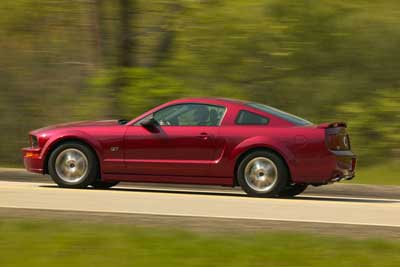
Photo 11 -- Ford GT
Reproducing a modern-day version of a legendary racing icon like the Ford GT40 would be a tough task for even the most experienced design and engineering team. Add to that a requirement that the new car look exactly like the old car while meeting all current safety and emissions standards without giving up an ounce of performance, and any lazy designer or engineer would avoid the assignment like the plague. But the guys on Ford’s now disbanded Special Vehicle Team (SVT) were not lazy. They knew what this resurrected icon meant to Ford and how important it was to transform the legendary racer into a modern masterpiece worthy of representing the Ford brand on its 100th birthday. There would be no second chances; this new car had to be the best performance machine America had to offer. Consider the mission a success. Not only did the team capture the look of the original GT40 but they also created a car capable of teaching the best exotics Europe has to offer a lesson while undercutting their price tags by half. The 500 horsepower, mid-engined, supercharged 2005 Ford GT was an instant hit around the globe, and with performance numbers like 0-60 acceleration in under four seconds and quarter-mile trap times measuring less than twelve seconds, the Ford GT lives up to everyone’s expectations.
